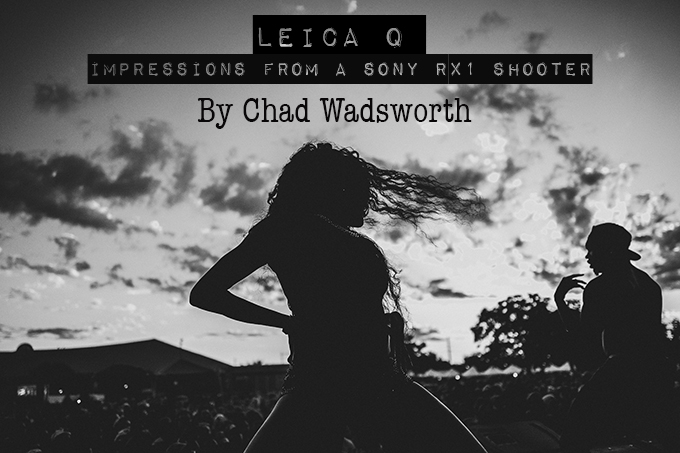
Leica Q – Impressions from a Sony RX1 Shooter
By Chad Wadsworth – Visit his website HERE
Over the past few years Sony has disrupted the DSLR industry with their full frame a7 mirrorless line, but the camera that started it all was the original RX1. Since its release in 2012, the RX1 has been labeled a modern classic – a full frame compact that you could use as your main tool without compromise. But technology moves fast and today there is competition in the space from both the Leica Q and the just released update to the RX1, the RX1RII.
The Leica has received praise from the online community so I was curious about how it would compare to my beloved RX1. The 28mm Summilux presents a wider fov compared to the classic 35mm of the RX1 – a positive to some, negative to others. The Q has a touch screen, built-in high-resolution EVF and Leica claims one of the fastest AF systems on the market. It was all certainly enough to have me interested. At the same time, I hoped the RX1 replacement would be announced soon and sure enough, Sony revealed the RX1RII in October, sporting the potent 42mp sensor of the a7RII, 399 phase detect autofocus points, a new pop-up EVF, tilt screen and the worlds first variable optical low pass filter – quite a feature set.
Finding a Leica Q to play with proved difficult but a couple of weeks ago a good friend purchased Ashwin Rao’s camera and allowed me to use it to shoot the Fun Fun Fun Festival in Austin, TX. Two days of intense shooting with the Q definitely informed my opinion on the camera.
No denying it, the Q is lovely. In comparison to the bulky, Bauhaus on steroids design of the new SL, the Q pays closer homage to the M line with classic rangefinder sensibilities. It looks and feels as if it was carved out of a solid block of aluminum with fine workmanship throughout the build. I particularly like how the thumb grip is inset into the back of the body. I received many compliments on the camera and even ran into one other shooter backstage.
Comparatively, the RX1RII hews to the same retro aesthetic but with a more modern twist. Build quality is similar but the design adds a unique pop-up EVF and a tilt screen for a more stealthy experience on the street. There is also a direct control dial on the front for focus settings – including a continuous mode with advanced features like AF Lock (tracking) and Eye AF (eye tracking). Even with these modern features an RX1RII shooter is going to field regular questions from strangers on whether the RX is an “old film camera”.
Initially I was surprised at how large the Q is, but it fits the hand well and isn’t so big that I wouldn’t use it in the same capacity as the RX1. The Sony is smaller and lighter (507g vs 640g), more of a jacket pocket camera. The size of the Rx1 is a major positive if you are looking to travel as light as possible with a full frame sensor. The Q actually weighs more than the original a7 with the FE 28/2 lens mounted (only 604g for that combo).
The 28mm Summilux f/1.7 permanently mounted in front of the Q’s sensor is wonderful. The highest praise I can give it is that when I first loaded images into Lightroom I thought, “wow, they look like they came from an RX1.” Of course the RX1 sports a Zeiss Sonnar 35/2 – the fifth highest rated autofocus lens in the DXO Mark database – and many feel it to be one of the finest 35mm lenses made, but I have no doubt that if scored, the Summilux would do very well. So pick your poison, 28mm or 35mm, both are truly excellent. I prefer 35mm so my choice is clear, but the Q does have a nifty digital zoom feature that lets you auto crop your images (even in RAW) to either a 35mm or 50mm fov. In typical Leica fashion, this digital zoom doesn’t result in a true magnification within the viewfinder, instead digital frame lines are overlaid in a quasi rangefinder effect. A novel implementation, but composing at 50mm with just a small portion of the scene within the frame lines was not ideal. I would at least prefer a menu option to select whether the frame lines or a full screen zoom were activated. Keep in mind that with the plentiful pixels of the RX1RII (42mp), that camera also shares the ability to crop into longer fovs (50mm or even a 75mm), greatly expanding the usability of the fixed 35mm prime lens.
The EVF in the Q is high resolution and comfortable to view, with little to no visible lag. There is some smearing deep in the corners but it isn’t too bad. I personally find the EVF too flat and with poor color balance compared to the Sony EVFs, which tend to have more contrast and very accurate color. I noticed that shadows often had a blue tint while highlights were yellowish. When I had a chance to try out the Leica SL with its huge EVF I noticed the very same color and contrast characteristics.
Where I was more impressed with the Q was in the autofocus performance category. One of my first shots of the day at Fun Fun Fun Fest was this image of a skateboarder flying up a ramp. He was traveling at a high rate of speed with only a fraction of a second to capture the moment. The Q’s AF was very quick and nailed the focus perfectly. My original RX1 could not have done the same. The a7RII with the FE 28/2 felt like it came close to matching the speed of the Q, but I at the time of this article I don’t yet know if the RX1RII is blessed with all the same AF capabilities of its big brother. I did get a chance to try the RX1RII at Photo+ and the AF seemed very speedy inside the Expo but I couldn’t test it in a wide variety of environments. As long as your subject has good contrast you can count on the Q to grab focus very quickly and accurately – we are talking faster than SLR speed in many circumstances. Having a contrast detect system, the Q will struggle a bit in low contrast scenes, but overall the focusing experience with the Q in the field was a non-issue and that is a very good thing.
So we have established that the Q is a handsome camera with great build quality, a stellar lens, a nice EVF and exceptional autofocus capabilities. The original RX1 had only three of those five characteristics, lacking a built-in EVF and excellent autofocus, and the new RX1RII looks to have all five. A camera is worth more than the sum of its parts though and the most critical aspect of any comparison is image quality.
I’m not going to be subtle about this, the Leica Q produced files that disappointed compared to the output from my Sonys. Specifically, dynamic range was relatively anemic (Ming Thein quotes 12.5-13 stops in his detailed review of the Q) and color balance was erratic in cloudy weather. With over 14 stops of dynamic range, the Sony RX1 and a7 bodies dominate when it comes to shooting in challenging light conditions where one would desire to recover highlights or pull detail from shadows. With the Q files I simply could not recover to the same effect and it wasn’t really close. Working with the files felt like I was a generation behind – I don’t like going backwards. Was I happy with many of the Q images? Absolutely, but the overall experience of editing Q RAW files and the number of images rejected due to a lack of depth in the data was dispiriting.
I also witnessed an alarming problem with banding in some Q files. In the image below, note the horizontal banding at the top of the image over the black tarp of the stage. This photo was taken at a moderate ISO and I did not heavily edit the shadow or black levels so I can only surmise that the banding may be due to the electronic shutter feature of the Q. Using silent shutter on the Sony a7 cameras will result in similar banding but with the Sonys you have the option to turn the feature on or off. On the Q, whenever your shutter speed exceeds 1/2000th of a second, the camera automatically activates the electronic shutter which enables faster speeds. There is no option to turn off this feature so if it is indeed responsible for the banding, you are stuck with it. On the RX1 and RX1RII there is no electronic shutter feature and the cameras are limited to 1/2000 when shooting wide open (1/4000 when stopped down).
Compared to the a7RII
On day two of the festival the weather was particularly nasty so I left the Q home and packed the a7RII and the little Sony FE 28/2. That lens is sensationally sharp with great bokeh for a 28mm so I was curious to see how it would stack up against the brilliant Summilux on the Q. I have to say that I see little difference in sharpness between the two which is impressive considering the $450 price point of the Sony lens. The mix of photos below are from both Q and a7RII, you should have a hard time discerning which camera they came from.
After shooting over a thousand frames with the Q in a challenging environment, even with the more limited dynamic range and banding problems, I was still impressed with many of the images that the camera produced; but at the end of the day I still prefer the Sony RX1 files with their rich depth and malleability. Given the killer 35mm Zeiss Sonnar lens, the smaller size and weight, the increased resolution, more advanced AF, class leading dynamic range and lower cost, my RX1RII order is safe.
See below for more samples from the Q.

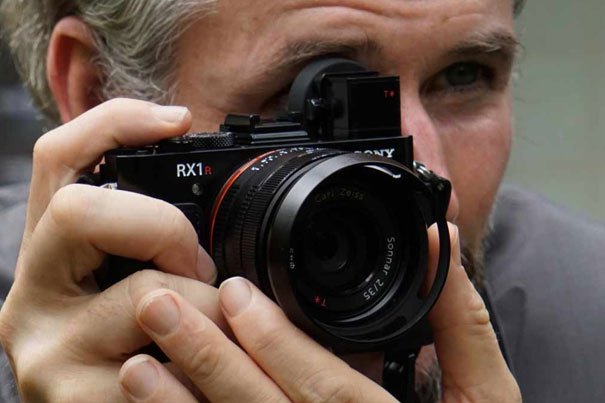

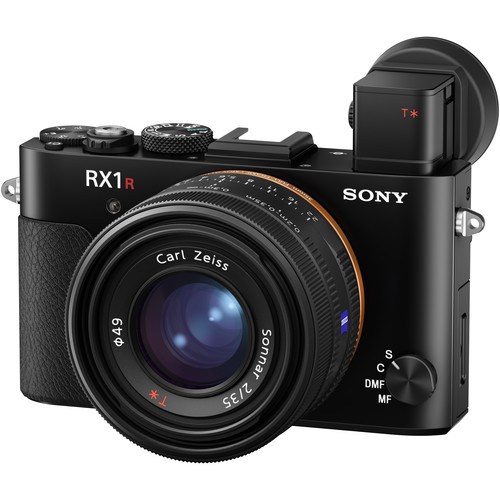
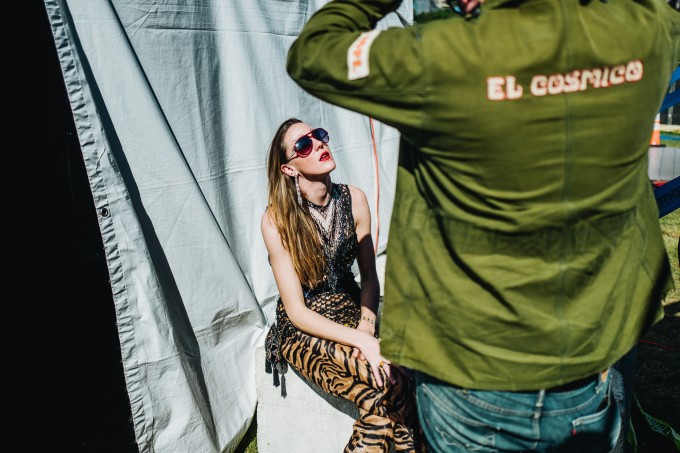


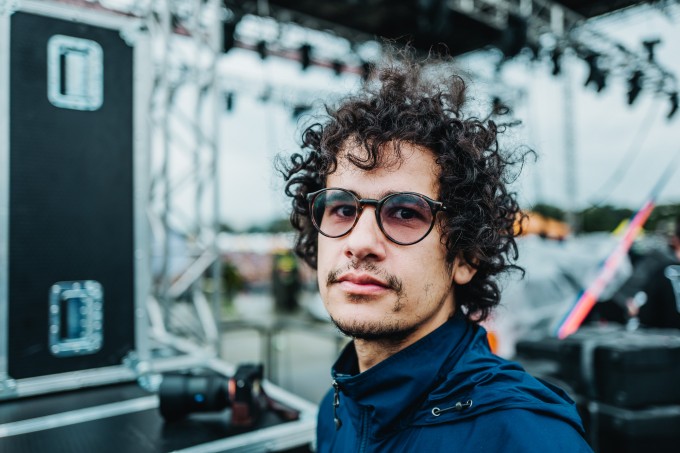
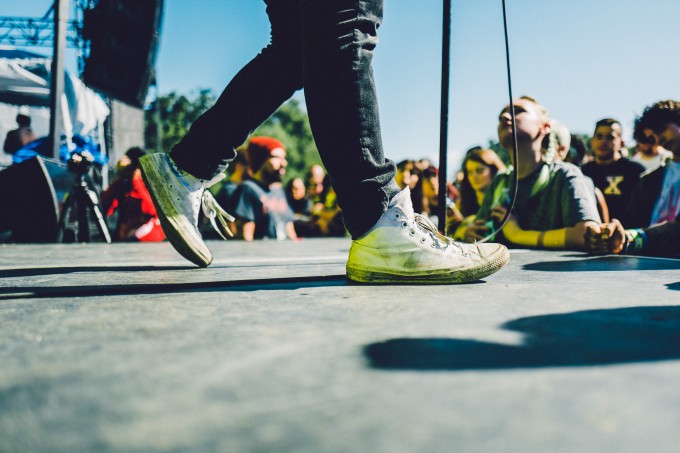
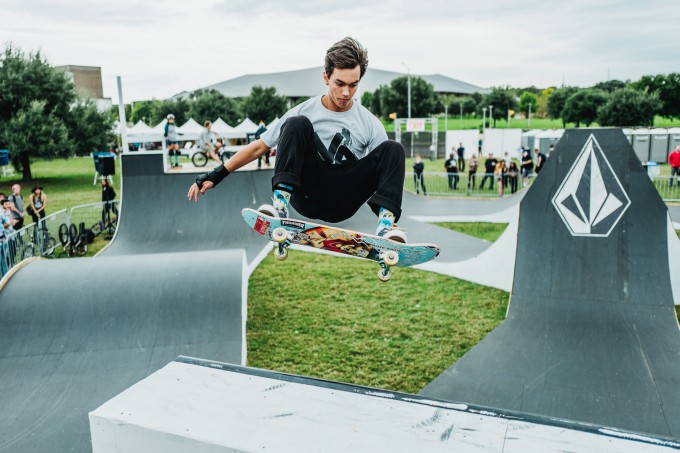

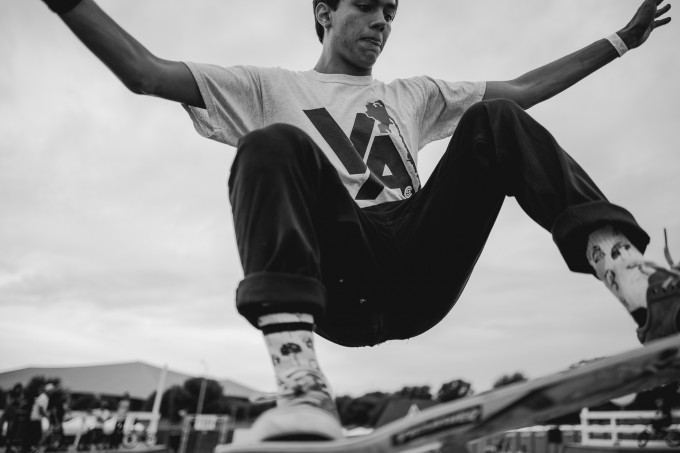
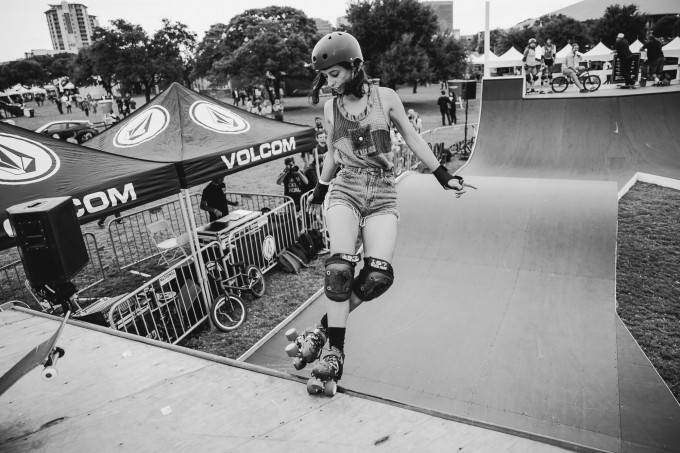
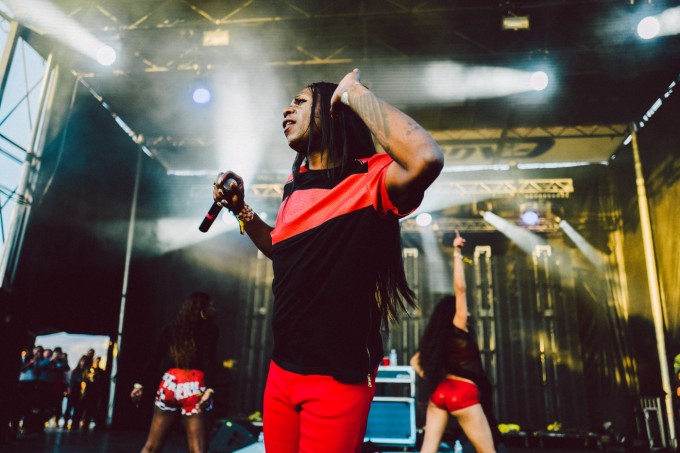

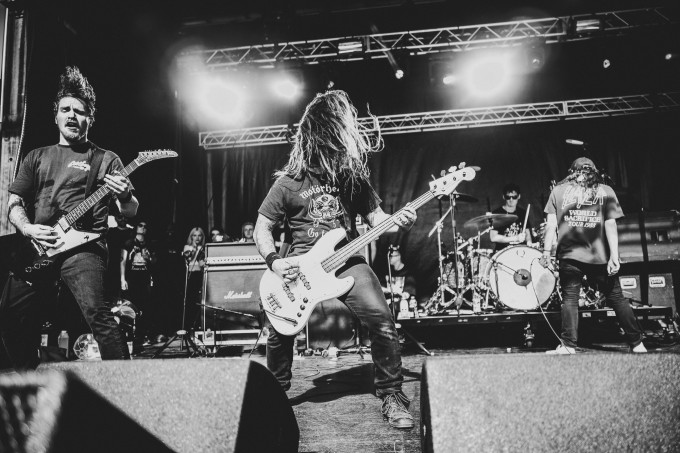


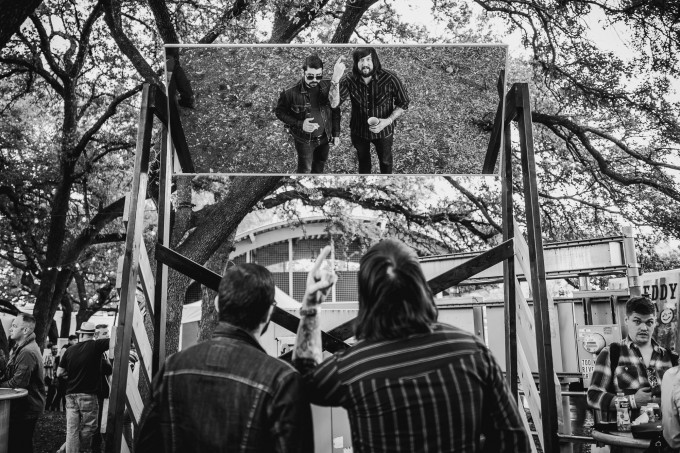
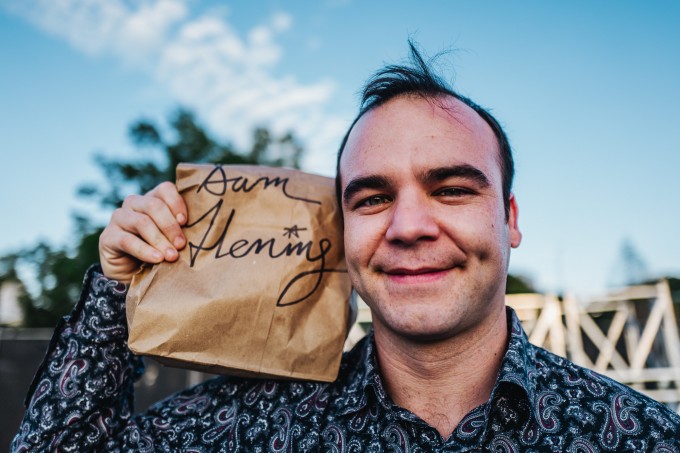
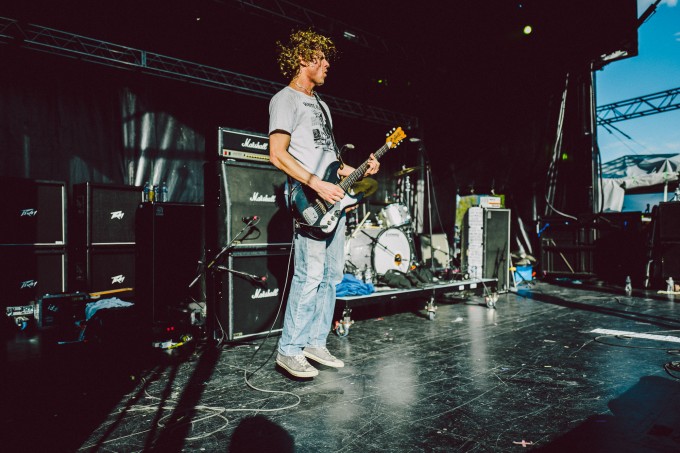


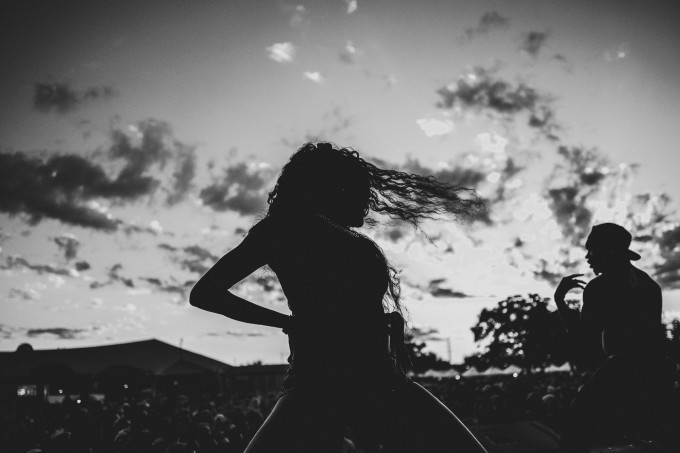


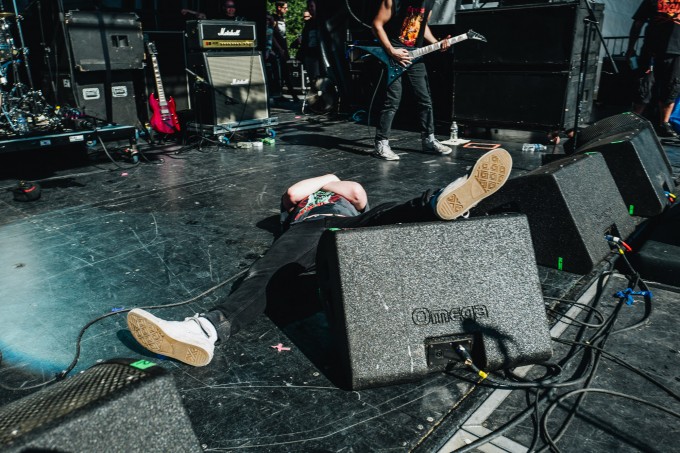

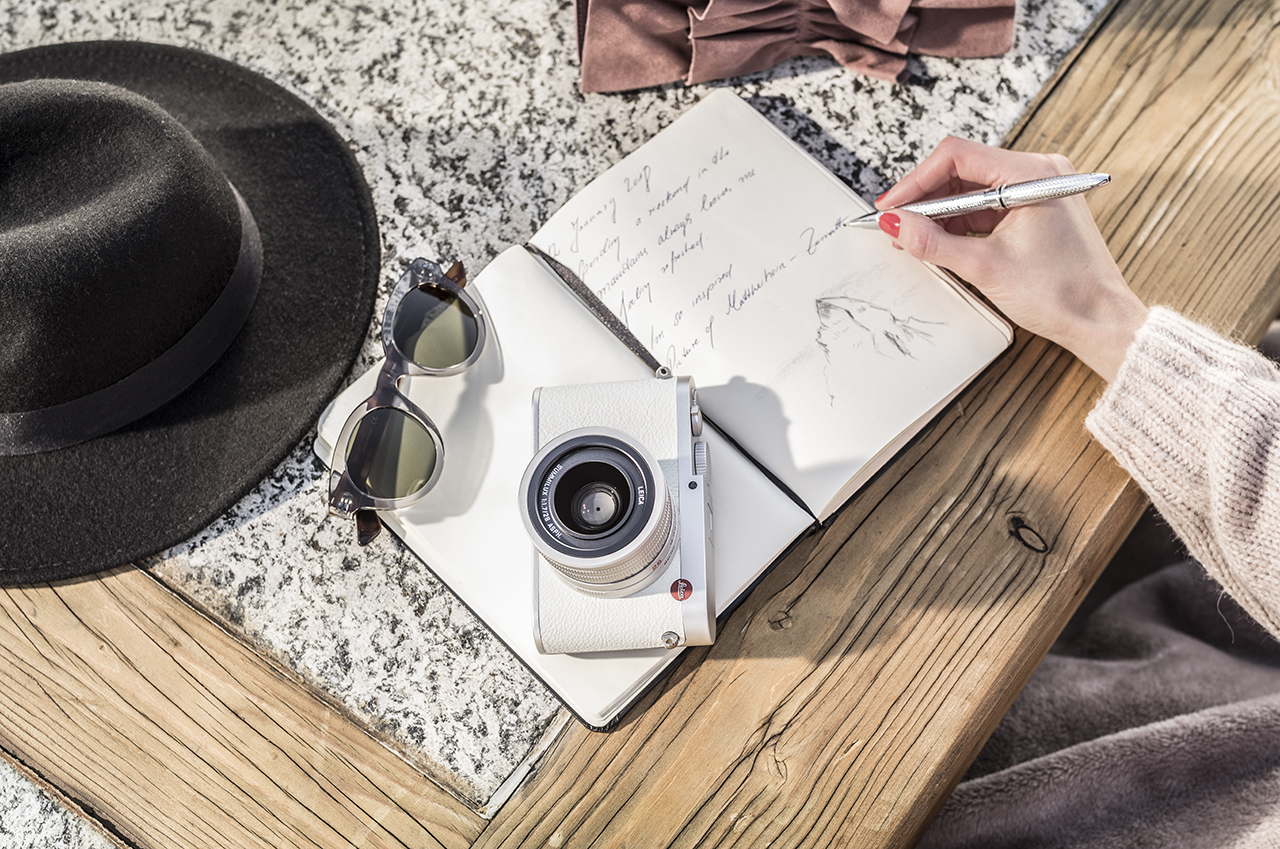

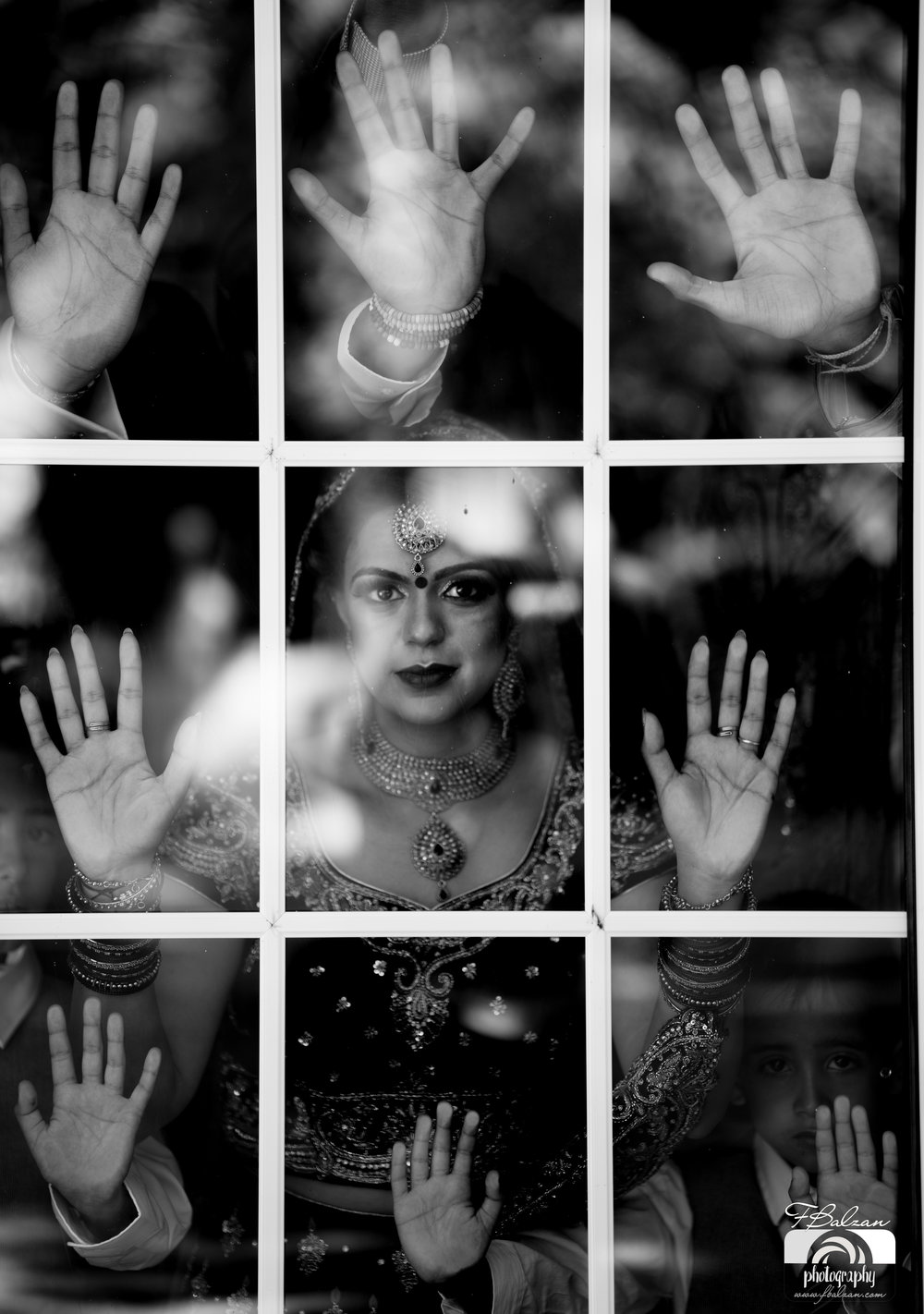
I would take the RX1RII. At the end of the day, I just find it to have a better sensor and IQ. Also prefer the much smaller size and 35 to 28. Build is a tad more solid as well.
Question for Steve Huff: If the RX1R ii and the Leica Q were the same price, which one would you choose?
This is terribly ill conceived. What matters is not the DR of the human eye but the DR of the image that the human brain constructs from all the visual information that the eye collects as it scans a scene. And that is far more than 6.5 stops of light to be sure and far more than any camera that you can purchase. So, the greater the DR of a sensor, the more closely a camera can produce images that approach what the brain sees.
And on the subject of exposure, of course it’s best to nail it, but how many of us can do that on every shot? That’s one reason that it’s good to be able to recover bright highlights and deep shadows.
“I do not like to focus and recompose due to the resultant shift in the focal plane. I prefer to move my focus points”
Huh? (resultant shift) – If you must rely so much on the camera’s decisions, stand back a bit more & crop properly in post process.
Relying on the AF so much, people may “prefer”, but they’re so slowed down by this distracting style of photography (moving focus points), that they miss the shots !
As a result, they revert back to the camera’s decisions; now you’re back to producing “overly centered” pictures like Chad’s…
Can somebody tell me how the manual focusing is on the Sony ? On the Mark 1 it was a real dog , on the Q its outstanding , has it improved ?
+1
Chad, you seemed to fire up the debate with your review. But the images were fantastic no matter which camp you lean towards. Great job on the photos, i can tell it doesn’t matter what camera you have in your hands, your going to produce some nice images no matter what.
Lovely images and processing Chad. Thanks for sharing.
Well said, and I agree that there is so much more to photography than megapixels, dynamic range and ISO. People get too caught up in those things when photography, even with digital cameras, is more about the experience. I care about the entire workflow from start to finish — framing the subject, exposing correctly, capturing the image, reviewing it, transferring to PC, post-processing and finally printing/sharing online. The Leica Q does it brilliantly. Sony’s, not so much.
What I love about Sony though, is that they innovate. If it wasn’t for the original RX1 (which I still own) the Leica Q never would have been born. The technology is there, so I just hope they pay more attention to ergonomics, controls, and handling. And yes, their support system is lacking.
I owned the original RX1r camera and loved it… Until my son was born. Landscapes were exceptional. I have a 6 foot wide print from one image and it’s breathtaking. But the autofocus was terrible. Completely unusable for shooting images of a child unless shooting manual and small F stop. The other thing that really turned me off, and I’ve spoken with Sony reps personally about this, is how abandon I felt by Sony. It was a very expensive camera and over the course of 3 years, not one firmware update to improve the camera. Also, the cameras don’t hold their value due to Sony’s constant releasing of new models without fixing old ones.
So, I spent more money than I ever have on a Q. I just have to say it is a world of difference as far as shooting goes. There’s a joy in using this camera beyond what I’ve felt in my years of taking pictures. It feels like a fine instrument rather than a larger RX100.
I’m not a pixel peeper, but to my eye, these images are magnificent. And the autofocus is almost on a par with my Olympus OM-D1. Great people pictures. Not limited to landscapes.
I love the way this camera feels with the finger grip and holster and how accessible it is to carry around. And when I blew up one of the images to 6 feet it was magnificent.
Either camera is expensive and a big investment. But it’s important to me to invest in a company that’s going to stand behind their equipment and continuously improve it, rather than abandon it until and make the improvements in the next model.
And I have to say, having a Leica store in Los Angeles, having their assistance and friendliness and support is a wonderful thing as well.
My first Leica, but there’s a lot more involved than what’s being discussed here. Take this camera out with it’s shoulder holster and finger grip and play and play and play and I dare you to wipe the smile off your face.
I own the RX1, X100T and Leica Q. Meep, you saved me a lot of typing. I echo your comments 100%.
Because it is more versatile as you can use any lens, shoot great video (RX1RII is not recommended for video, even Sony says this) and it’s a more pro package. The RX1RII has slightly better IQ but is more limited. That’s why 😉
Actually the RX1R and RII produce technically superior images to the Q. More DR, better high ISO, more resolution (RII), more pop and more room to work with the very hardy files. The Q files are great for the look/rendering that it does, if you like that look (I DO), but we can’t kid ourselves. The RX1R and RX1RII produce “technically” better image quality all the way around (DR, ISO, DEPTH, etc). For much less too. BUT, if you share online and that is all, go with the camera that puts out the look YOU like. At this level of camera, you can not make a mistake, believe me. All I know is that I have the Q and RX1RII here in front of me. If forced to choose one for ME to use personally, it would be the RX1RII, hands down. Not because it is so much better than the Q, as it is not. The Q has strengths above the Sony in a few ways (shutter speed, more convenient EVF, quicker) , and the Sony has strengths above the Q in a few ways (ISO, DR, RESOLUTION, SIZE and PRICE). It’s just personal pref, and since I own an SL and an A7RII already, the RX1RII would be chosen for me for its size and sensor over the Q.
I can see that both these cameras are first rate. For me, it comes down to 35mm vs 28mm. I’ll take 35mm. When an RX or a Q with a 50mm comes out – that will be a harder decision.
“2. A7RII
3. RX1RII”
Steve,
What about the A7RII do you like over the RX1RII? Or do you rank the A7RII higher because of it’s ability to use different lenses?
“I have owned the RX1 (not the RX1RII) and I own the Q, and while the RX1 produces very good images, it is not in the same league as the Q”
Not in the same league??? You’re acting as if the Q puts out files similar to a Phase One Medium Format setup.
That is a fair assessment and I admit to being guilty of chimping quite often. Mostly it’s for checking if I nailed focus or if there was any handshake with slower shutter speeds. The Q is quite a speed demon in this regard so it helps in capturing more images. Thanks for replying btw.
I have no sluggish performance at all and the original RX1 IS INDEED more sluggish in all aspects. Writing to teh card, I just snapped off 8 images as quickly as I could press.focus and shoot. No issues. What does it matter how long it takes to write to a card when you will be looking at those images at home on your display. It does not affect shooting one bit, at all. I can aim, and fire VERY quickly with the RII and the Af is much improved over the last model. It’s a much snappier experience overall than the last gen. I never ever zoom in on images using the camera (Don’t see the point and it takes me away from shooting), so for me, that is a non issue if it takes a second to zoom in. The RX1II (and Q) should be used for casual shooting. It is a take anywhere full frame powerhouse with massive resolution and power in a camera that slips in a coat pocket. That is what it is about. It’s not a machine gun shooter, its not a sports camera, its not a camera meant for any kind of speed shooting…in fact, its meant for street shooting (as per Sony). It is much like shooting a Leica M in its own weird way (has more in common with a Leica M than anything else really) and at the end of the day, it is the IQ that is just so phenomenal that anyone wanting this full frame IQ/DR/ISO/resolution performance in a coat pocket camera can now have it. The RX1RII, for me, is in no way slow or sluggish but it is not a speed demon either, it is not supposed to be. The old model was super sluggish but acceptable for those wanting that IQ. I guess if you are someone who takes a picture, then has to zoom in and chimp after every shot, I would say to NOT get the RX1RII or Q as that is not what they are about or optimized for. Taking photos with these cameras should be fun, relaxed, and for those wanting the best IQ possible. Not stressing and zooming in on every image you take, that should be done at home 🙂
Hi Steve, do you still have original RX1/R in your possesion? I have all three models right in front of me, and I can tell you with certainty that the only thing faster with the new model is AF speed. The RX1R2 clearly takes longer to save, load, and zoom into the images, so it’s quite apparent that the camera struggles in handling the bigger 42MP files. Sony needs to put a better processor in there.
OIS is needed for lower ISO and noise, which in turn will retain DR. Most other things I agree with, except for the easier to hold part. Both the Q and RX1 desperately need a proper grip.
I think it comes down to what you prefer. I really like the simplicity, quiet operation and portability of these types of cameras. In trying to find what works best for me I’ve owned the RX1, Fuji X100s and Leica Q.
I bought an RX1 within the first year and used it as my main camera until recently. I really enjoyed using it, but I didn’t so much like the post processing. t constantly struggled with the skin tones – often came out too red. I also found the the AWB very unreliable. At times I ended up with some odd artifacts out-of-camera. Saving to the memory card was painfully slow even with a fast card. Many times I’d take a shot I wanted to review, but had to wait for the write to finish. I’ve never had this happen on the other digital cameras I’ve used.
I tried the Q on a whim and instantly fell in love with it. The colors and the pop of the DNG are very much to my liking. AWB has only failed once. Post processing is a breeze. I often just take the DNG into LR, apply a medium tone curve and some noise reduction and I’m done. I like having the touch screen for picture review and for touch-to-focus and for moving the focus point when I need it. Operation is snappy.
The DR on the RX1 does seem better. Noise also seems better controlled on the RX1, although the nature of the noise on the Q is more appealing so I can tolerate it. MF on the Q is a breeze whereas I could never quite get it on the RX1. The Q is the first camera where I actually enjoy using MF.
I can’t speak to the RX1rII since I’ve not tried it and haven’t been tempted since the Q is what I was looking for. It seems like a nice step up from the RX1. Having the full power of the a7xII class AF is a nice addition.The huge number of PDAF points should also help, although I haven’t yet noticed much of an advantage when using cameras with on-sensor PDAF vs. a good CDAF system – and it’s still no where near an SLR or SLT in my experience. I think on-sensor PDAF will improve over time. Partly through algorithm improvements and partly through improved hardware.
Just to note, the Menu in the RX1RII is as simple as they get. NEVER do I need to go into it for anything as after it is set up, it is set up. Use the quick menu to change any setting you wish within a second. The Q is nice. The RX1RII is nice, and a pretty nice jump from the old version in speed, response and of course the EVF and resolution. If you want 42MP full frame that fits in a jacket pocket, go RX1RII, best IQ in a full frame camera next to the SL. If you want a look that is high contrast and bold and are happy with 24 MP (I am) and do not mind a larger size and some limitations with ISO and DR, the Q is the answer. Limitations…well, not some much limitations..as the Q can stand on its own 100%. But next to the RX1RII files, the Q files are much different and will be persona pref as to which one someone will buy for themselves. Some will refer the Sony, some the Leica. For me, the Sony wins easily. Its $1k less expensive, feels better in my hand, has a more “organic” IQ, more DR, better in low light and I prefer the EVF of the Sony. Other than that, the Leica beats it with shutter speed capabilities, OIS (which is not needed for either camera), and its a little bit more snappy. Both are fantastic. One offers a little more for less, and one offers the name and mystique for $1k more. Can’t lose with either.
Hi Steve, greetings from the UK! What a dilemma – after the Q was announced went to the Leica store in London, had a play and was mesmerised by it. Put my name down and a deposit, after 4 months still no sign so I got a used RX1 to mess around with and have to say it ticks a lot of boxes. I had the Fuji X100 & X100S, have an XE-2 and an Oly OM-D EM1 after several years with DSLR. The Q put all this in the shade until the bloody RXr2 was announced! I love the aesthetics of the Q but am hard pressed to not see the RXr2 being able to provide more practicality in its feature set. It makes me smile that the RX100 series packs so much into such a small space and adding a big sensor and superb glass combination to its newer relation is just too tempting 😉
Brilliant site and always inspiring – long may it continue.
Thanks for the comment Chad.
The human retina has a static contrast ratio of around 6.5 f-stops and can detect a luminance range of about 46.5 f-stops. As soon as the eye moves it re-adjusts its exposure.
Arguably it is the 6.5 f stops that matters at any given time, because we have to shift our focus to lighter and darker parts of the scene/image to use the full range of our retinas’ DR. So no matter where we look at a scene, we only see 6.5 stops of DR and that is what we need to capture a scene as the eye sees it.
Anything outside that in the same image becomes digital/HDR, which is why huge DR numbers do not matter to me as using them will result in a fake looking image. It may look ‘cool’, but our brains will notice that something is ‘off’, that we do not actually perceive that in real life.
Steve, I don’t quite see how the Q being lighter than a M is a negative. In fact, it kind of contradicts the previous comments you’ve made towards DSLR’s — that it hurts your neck and shoulders while carrying. (btw the Leica SL with the zoom lens weighs even more than Canikon systems…) If anything, lighter weight is a good thing, unless you’re arguing that Leica should have added 200 grams of deadweight metal to the casing, just to make it feel more ‘solid’ If you honestly feel that way, I would suggest that you try the Leica handgrip, which helps with the front-biased weight distribution while also making it much pleasurable to handle. It’s a fantastic accessory.
Steve, I’ve read that many Q owners are past-M users with deteriorating eye sight, no longer able to focus with a rangefinder. So zone-focusing with a proper DOF distance scale on the lens is a significant feature to that crowd. With the Sony the focusing distance resets to infinity every time you turn it off. A pretty poor MF implementation, considering how poor the battery life is too.
I own both the RX1R and Leica Q, and I am currently testing the RX1R2 which I will probably return. Quite frankly, I do not like it.
Chad, your review is great but I find it too generous when talking about the Sony’s. Yes the RX1R has better high-ISO capabilities (1 stop worth) and more DR (maybe 1 – 1.5 stops worth) But the Q has features that are far superior as well. OIS that can compensate for 3-4 stops in the low light situations. Shutter speeds up to 1/16000, which is 3 stops worth in bright situations. So the Q is a much more versatile tool in most real-world lighting situations.
And how often do you need 14 stops worth of dynamic range? Maybe 2-3% of your photos? Certainly none for your photos above. You make it sound like the sensor advantage applies to most or all your photos, when in reality it is a very limited advantage. Besides, in most situations (ie landscapes) you could compensate for dynamic range with multiple shots (HDR) and then you get 20 stops lol. So in my humble opinion, DR is a vastly overrated feature in the internet world.
Back to the reason why I’m returning the new RX1R2. The operational speed is too slow. It feels so laggy. Yes, the AF speed may be 30% faster than the original RX1R (still slower than the Q btw) but reviewing and zooming in on images must be 30% slower. It would have been OK 3 years ago in 2012, but unacceptable in 2015. The lagginess is a complete letdown after getting used to the Q, which is probably snappier than most DSLR’s. It’s the same reason I returned the Sigma DP1 (in fairness the Sony is much faster, but you get the idea) Usability still stinks with RX1 and now it’s even worse with the new model. Sony needs to work on their menus and better processing for a more pleasing shooting experience.
Sony vs. Leica
My .02
I a/b ‘d approx. 500 frames with each, same subjects, same settings.
To me, its the difference between plasma / led monitors, vacuum tubes vs. transistors…etc.
It’s opinions…all subjective to the eyes and ears. I do confess…I am still an analog guy at heart.
I rented the Sony and purchased the Q from B&H ( 6 month wait).
They have a liberal return policy…I felt I had a $4650 “insurance policy” if I did’t like, it returning is a breeze.
I have decided to keep the Q. It renders exemplary & accurate images.
It is a straight forward, incredibly well built camera that has the settings /features I use.
Yes… images are stellar …as are the Sony’s.. BUT.. The Sony has too many menus, submenus and features I would never need or use, in fact they complicate shooting for me. Still, after 4 decades of creating photographic images, I shoot in manual settings. I do enjoy my Fuji for emulating several different films, but thats the extent of my in camera needs.
I found that monochrome images of the Q were richer and more “tonal” to my eyes (27″ calibrated iMac).
The documents and “test scores” speak for themselves, let the forum members split hairs and pixels.
I still enjoy my Canon G-11 as much as I do my Nikkormat 50mm 1.4.
I know I didn’t contribute any significant data, pro or con for either.
Drink the wine you like, watch your most “accurate” monitors and listen to your favorite power/pre amps.
In the league of the 2 cameras, Its really not the camera. Its the person behind the lens.
Thank you for reading. Flame on.
Chad- Nice write up on your impressions of both cameras. Seems like either one would be fine choice. It really shows how each manufacturer has it’s own “look.” I find many Sony photographers feel need to push the DR and produce very unnatural looking images. You show a much more subtle/pleasant style. Well done.
Huss, that is one way of looking at it. Another would be that we want as much latitude as possible to capture a scene as the eye sees it. Much easier to reduce latitude in post than to expand it. I don’t think anyone is advocating missing exposure and then relying on the image’s DR to correct.
Point taken though. For some, the native color, acuity or the way a lens renders will be more important to them.
The SL beats the A7RII and RX1RII for color, AWB, detail at higher ISO (in all of my use and tests), and overall richness of file. It has depth with a wonderful DR. The Sensor, which is the same as the Q has been refined and tweaked for the SL, so you will not get the typical Q IQ from the SL. There is much more to a sensor than the sensor itself when it comes to IQ and all of that. The RX1RII beats the A7RII SLIGHTLY for IQ, and it is slight. The RX1RII technically beats the Q for IQ, bit will not beat it for half of those who look at a Q file and an RX1RIi file. DO not mistake “technically” for “pleasing”.
The Sony will offer better low light than the Q (and the SL beats the Q for low light/high ISO), a better lens that is an actual F/2 lens (the Leica is variable and not a true 1.7 lens), more bokeh if that is your thing, more pop and its quite a bit smaller while being a little better made – can fit in a coat pocket, the Q will not. The RX1RII is about A7RII quality in a jacket pocket..truly take anywhere with phenomenal IQ and features. Neither the Q or the RX1RII is meant to be a serious video machine though, even Sony will tell you do not buy the RX1 for video, they told me.
It’s all personal pref.
For me and my tastes, the best digital cameras EVER made:
1. Leica SL
2. A7RII
3. RX1RII
4. Leica M 240 (The M is not for everyone though)
5. Leica Q
6. Olympus E-M1
Personally I think way too much emphasis is put on ‘massive’ DR. The important thing is to nail the exposure. Using DR to recover from fundamental mistakes just results in a plasticky looking digital image.
Some highlight and shadow recovery is beneficial, as it lets us fine tune an image the way one would dodge and burn in a real darkroom, but I’ve seen way too many images that are rendered fake/HDR looking just because the user went overboard with the DR recovery. If you need 14 stops of DR, you must really like a synthesized look.
I think so too. I just love 28 & 35 mm lenses and got hooked up on that sentence. Of course there´s much more to lenses than DXO can reflect in their ranking and this 35mm Zeiss is something really special imo.
Thanks again for this great review!
Ugh. That should read “probable.”
Also, I’m genuinely split between these two cameras at the moment and will likely end up with one of them in the near future. So this is valuable.
I realize $1000 is a lot to pay for better UI and aesthetics, but I’m still drawn to the Q (from afar) in spite of Sony’s probably technical superiority. In addition, having been burned by Sony’s awful customer service in the past (I ended up tracking down and emailing the VP of North American Support to get help) I’m very Sony gun-shy.
The SL beats the A7rII file/IQ wise. Yet the same sensored RX1RII beats the Q, which has the same sensor as the SL does, handily? Help. I am really confused now.
Yes, you are right. Last time I checked – about a month ago, that was the case. I’m not sure if DXO added additional test scores to the ranking or if I missed something the first time. Still, a great performer and one if the best 35mm AF lenses in the ranking – I believe just behind the Sigma Art.
It will be interesting to see where the lens ranks on the 42mp sensor. My bet is that it will be jumping up considerably.
Thanks for the fact check.
Rich, I’m sorry if you think my comment is hyperbole and I can see where you might think that – “destroys” is certainly a strong word but I stand by it. My evaluation is based on my post processing workflow and as I said, working with tens of thousand RAW RX1 images. The difference in latitude between the RX1 is pretty significant in my opinion, but I welcome the opinion of others. Thanks for your comment.
No contest in low light, the Sony wins there. Colors are quite different between the two with the Leica giving some awesome RED tones and the Sony excelling in blue tones. Both are great cameras.
If you want an EVF, faster AF, faster response, the new sensor (which will retain the same RX1 look but more of it) then yes. If not, the old one is just fine and provides top of the heap IQ even today.
Manually focusing on the new Mark II is fantastic. Did you try it? I see no advantage to the Q with manual focus. IN fact, not sure why one would use MF on either except in a rare situation. The Q is $1k more than the Sony yet the Sony does indeed have better IQ, details, DR, ISO noise, etc. The Leica is fun to shoot with, but it’s larger, feels a tad hollow (especially to any other real Leica) and has a 28 vs a 35. The Aperture of the Leica is also variable which they do not advertise (closer than 1 meter and it will alter the aperture, even if manually set to wide open). The Sony is f/2, even in Macro mode. Both have their benefits, their pros and their cons but the Sony is indeed the better camera for IQ, and with the new EVF its just as fun to shoot. I prefer the RX1RII over the Q, and the fact that it is $1k less makes it that much nicer. But the Q is wonderful, and many will prefer it for its design and image character, enough to pay an extra $1k for.
Shooting both I can say that for DR, Sony wins handily over the Q. The Leica Q has a nice dynamic punch and contrast to the images, some like this, some do not but at the end of the day, the Sony Sensor seemingly has a much larger DR over the Q. It’s up there at the top of the DR heap. The Q puts out powerful image quality though..dramatic. The Sony files are more gentle and “organic” out of the camera and can be worked with to no end it seems without falling apart. Sony knows sensor tech, without question.
Chad, those are amazing pictures. I really loved reading this article.
Cool that there is little difference with the A7R + 28/2 combo. This is the hard reality for people suffering from GAS.
The electronic shutter problems remind me of my GM5. Such issues are tolerable for a cheap and tiny Panasonic camera, but not for the expensive Q.
Great read, thanks.
But regarding: “Of course the RX1 sports a Zeiss Sonnar 35/2 – the fifth highest rated autofocus lens in the DXO Mark database – and many feel it to be one of the finest 35mm lenses made..” I love the Zeiss lenses but I just checked the DXO Mark and it is more like #15 in the dxo lens score or around #25 from all lenses, following such glory names as Samyang 😉
Thanks for your reply Chad, and it wasn’t meant as real criticism. I don’t focus and recompose either, but move my focus points around all the time and as you move further away from the ones in the centre the results become less reliable.
When I’m out with my F2AS or one of the compact F’s it’s so easy to focus right up to the edge or corner of the screen, if your eye is up to it. The AF on my camera certainly can’t do that, and the focusing screen doesn’t help either.
😉
“RX1 destroys the Q when it comes to dynamic range” – sorry but this type of hyperbole rather defeats any sense that your opinion is subjective. Yes, the Sony has more DR but “destroys” is just nonsense 🙁
Correctly or not, you just come over as a Sony fanboy and it really undermines this article as a useful comparison which is a shame when there are obviously plenty of people wanting an honest appraisal of both cameras.
Each to their own, I had the RX1 for 2 years, recently bought the Q and tried the RX1Rii for 3 days and returned it in favor of the Q. There is no doubt the RX1Rii gives technically better images but the Q is just much more fun and engaging to use and the images are still exceptional in 99% of situations.
The AF on the RX1Rii is certainly improved but it isn’t close to the Q or my E-M1 and manual focusing is a joy on the Q in comparison.
Obviously if you prefer 35mm or genuinely need 42MP then your choice is already made but I would urge anyone spending this much money to try to get both cameras in their hand for a test drive before making the leap.
Chad the photos are amazing! You mind sharing your post processing technique? I really love the creative style on all of your images.
I love my RX1R to bits.
I’d like the new one, but I think I’m going to hold-off. I’m going to use the money to keep saving for a 50mm f1.4 Summilux ASPH.
I have a feeling that my Rx1R at 35mm
and my A7II at 50mm with the Summilux
would be a pretty difficult combo to beat for the money. (I already have and LOVE the FE55 f1.8)
I don’t really need the massive files from the new sensors, when the “old 24mp” sensors have such a lovely look to them …
The Q at 28mm just never really interested me personally..
Well, you may be right. I looked up for “banding electronic shutter” and it seems under artificial light, electronic shutter can cause banding. It is not limited to Q though.
I don’t have Q therefore don’t know the extent of banding issues (I use M240 and it’s banding doesn’t bother me). At the end, only you can decide what is good for you and you choose what works.
Great write up though on comparison. Thanks.
I enjoyed reading the above conversation. I have the RX1, the A7Rii and the RX1 has been a joy to use and I have taken some excellent shots with it. I am drawn to the built in pop up viewer (because of the need for reading glasses). The question is do I really need the RX1m2 or do I just want it?
personally I don’t see the banding issues very often as much as some people say. I definitely think the RX1R is better low light than the Q but the Q makes up for it in the “Leica” colors!
Thanks for sharing
The colour photos have that ektachrome or e100vs look to them. I kinda like it. Was that your processing or a signiture of the Q? Great bunch of photos and read. Cheers
Sorry John! Didn’t mean to call you Quentin. I was thinking of another shooter for a second.
Hey Sergey. Thanks and you are welcome. I actually got to shoot a loaner Rx1RII this weekend and had some paid work with it Friday night. I managed to get 750 shots out of 2 and 1/4 batteries in cold 50 degree weather so I was pretty happy with it considering I was using AF tracking. I did turn on Airplane Mode and shut the camera off in between shots. The camera turns on pretty quick so I didn’t feel like I was missing any opportunities.
I’m sure Steve’s upcoming review will concur that the RX1RII has not lost one ounce of the RX1 magic but instead has gained some super powers. I can not wait to get mine.
Thank you!
Well put, Michiel.
Yes, there are some images I got on the Q where I was just blown away but I had to remind myself that I have had that same reaction countless times with the RX1.
I edit all my images so don’t pay any attention to JPEG output or even bother comparing a camera’s native color output as all of that can be edited to taste. You should go back and play with those RX1R files if you have them in RAW; I think you will be even more impressed with them now that you know the ropes in Lightroom.
Chad I really like the way you process your photos. Any good resources/books you can recommend?
Kindly disagree. Both are so good in terms of lens rendering, it becomes purely subjective. But when you look at the depth of the Sony files, even the original RX1 destroys the Q when it comes to dynamic range.
So whether you want low contrast or high, you have more bandwidth in the Sony files to achieve your preference. Believe me, no one has ever criticized the RX1 for not having a world class 3D pop.
If my preference was for contrast, as you suggest Quentin, then the Leica with its clipped highlights and crushed blacks would get my vote. Of course I take the argument to the extreme and the Leica files aren’t THAT bad but after working with tens of thousand RX1 files and then experiencing the limitations of the Q files, I’ll trust my own experience. Your friend may have a completely different set of criteria.
At the end of the day, the Q is a superlative camera to use with a top notch optic but that means nothing to me if the files let me down.
There is no explanation for an optical artifact that would look like this. The fact that the lines are horizontal – there is some curvature at the corners – and equidistant from each other points to a sensor based issue, likely due to a combination of stage lights and electronic shutter. I confirmed that the shutter speed here was 1/2500 indicating that electronic shutter was used. Regardless, the banding in Q files is well documented and I want none of it.
It is not banding in the quoted picture, but something else. The “bands” in this picture are not exactly straight horizontally (bending upwards towards corners slightly). It seems like an optical artifact and not coming from sensor. The bands are visible in brighter part as well (on beam of light from lamp). Sensor banding is limited to the dark areas.
I am not saying Q doesn’t show banding but it is not evident in the quoted picture.
I agree with the review…I don’t shoot, I just take simple, plain pictures…I have used, still use the very first 100 or so RX1 made in Japan…so long ago.
I am very familiar with the Sumiluxes mounted on M8 and M-P 240.
But does the SL not have the same sensor as the Q (with slightly cleverer processing)?
The Q puts out MUCH higher contrast images over any sony including teh A7RII or RX1RIi which put out low to medium contrast images. The Leica has high contrast by default (to give the look) and more saturated colors. The Sony leaves more room for Processing to your tastes. If the price were the same Id say get the Leica. But its about $1000 more than the Sony and not worth the extra $1000 over the RX1RII. NO way no how.The RX1RII gives me the best IQ next to the SL I have seen..gentle, smooth, organic, very hardy files, super high ISO capable… and a 35 f/2 at all distances, even macro mode. The Leica is larger yet does not feel as solid, has no tilt LCD and the files are quite a bit different to give that Leica feel. Higher contrast, bolder color (esp the deep reds) and noisier at higher ISO. Best way to judge between the two is by looking at the files..some will prefer Leica, some Sony but then the question is…is the Leica worth nearly $1000 more?
Problem is everyone wants a Leica Q comparison. I do not have or own a Q. Getting one is problematic. I have to rent one for $250 but lens rentals just received it back in stock for rental. I will not have it until Friday, which means my RX1RII review is at least a week away. It’s basically the RX1R with an adjustable and defeatable AA filter, pop up nice EVF, the A7RII sensor and 30% faster AF. Other than that, its the same RX1R we all know and love. Improved. Same lens, same body style and size, and same signature look as the old version with more resolution and details.
Good timing on your captures. I particularly like the girl skater whom you photographed in a seemingly ballerina moment, and the levitating wrestlers. Nicely done.
Steve – given Chad’s favorable comparison of the Q to the rx1, when will you be posting your rx1rii review?? Very curious what your thoughts are on the new Q-killer.
A very fair criticism and honestly, I do not like to focus and recompose due to the resultant shift in the focal plane. I prefer to move my focus points and on the Q I had the camera for such a brief time that I didn’t mess with it. On the Sony a7RII (and the new RX1RII) I am loving the AF tracking features that enable you to effortlessly recompose and get your subjects off center without having to manually adjust a focus point.
Obviously two amazing cameras! I personally love the integrated EVF and the more simple/minimal design of the Q. I’m not so sure how coat pocket-able the Sony will be once the EVF has the eye cup piece attached? Hard to beat the Leica gestalt!
Not particularly Peter, but there’s more to life than centred subjects; rules don’t come into it.
Anyway, what camera is to be chosen, what should we do?
IV
Own the Rx1 as well as the a7r… Rx1 is fine without the upgrade, but need to get better fast focusing on the a7, so is the rii or the sii the way to go or wait for the iii… Need some advice
Oh yes, the rule of thirds.. gotta love it!
Very well written story, and great images (albeit most of them suffering from centred subjectis). So what should we do?
I was sure hoping to get HUFF-SCOOP on the RX1R2 before Christmas – Any chance that review is close Steve? Thx! 🙂
The consensus on the net is that the Q jpeg’s are not very good and you need to shoot raw to get the best image quality. My RX1 jpeg’s are very good. Did you have a chance to evaluate this?
Michal ,give me your Sony !
Hehe
Great pictures! I have a Leica Q and have been a RX1R user from the beginning (RX1). I agree with the dynamic rage and the banding issues; however, I must say I enjoy the pictures from the Q more! Leica colors and “feel” of the photos are hard to argue with.
The only thing I disliked about the Q compared to the RX1R was the jpeg output. I normally hated spending time PP and the RX1R had a great jpeg output. The Leica has forced me to learn Lightroom which now I’m glad it did. I would be doing the Q a disservice if I used the in camera processing. The Q has made me a better photographer.
Great review! Thank you for taking your time to submit it. I’d love to hear more people’s input on the comparison as well because for me the Q wins!
thats so true… :). I own one.. no other lens can produce such a nice bokeh
Great photos,Chad and very nice review.I am also fan of Sony RX series and recently bought RX1R2 and love this little beast,the only negative part is short life of the battery.
Cheers,
Sergey
Finally! Thank you Chad for the article, and for your honest unbiased opinion. Best wishes.
That question needs to be reversed. The bokeh of the Zeiss Sonnar is gorgeous.
I have owned the RX1 (not the RX1RII) and I own the Q, and while the RX1 produces very good images, it is not in the same league as the Q. I have a friend that has the Sony A7RII and a Q and he claims that the Q consistently produces better images with more pop than the A7RII. I note that the author tends to have a preference for very high contrast images and based on memory, I seem to recall that the Sony signature tends to be higher in contrast than the Q and that might influence his preference.
Does the zeiss lens of the rx1r II produce the same creamy, fantastic bokeh quality of the Q?
I like the picture with the guy and the dollar bill taped to his head. That…that is epic.